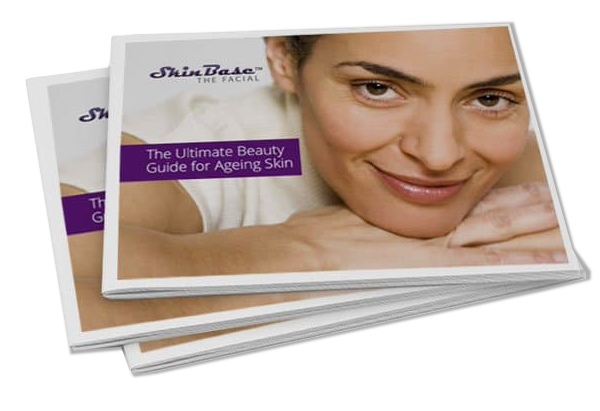Kojic acid (KA) is a naturally derived ingredient extracted from several types of fungi. It was first discovered in Japan in the early 1900s. In recent years, it has become a popular ingredient in skincare products due to its ability to lighten skin, fade dark spots, and improve overall complexion. Read on to find out more about KA.
Download a FREE beauty guide
Discover our collection of free beauty guides.

How Does Kojic Acid Work?
Kojic acid works by inhibiting tyrosinase, an enzyme responsible for the production of melanin in the skin. Melanin is the natural pigment that gives our skin, hair, and eyes their colour. An overproduction of melanin can lead to dark spots and melasma. By blocking tyrosinase activity, KA interferes with the melanin formation process, reducing the appearance of any dark spots and discolouration. This inhibition helps the skin to gradually lighten over time, leading to a more even complexion. KA also has mild exfoliating properties, promoting the shedding of dead skin cells. This renewal process also helps to minimise the appearance of pigmentation, by revealing the brighter skin beneath.
Benefits of Kojic Acid
Kojic acid is incredibly popular, due to its wide range of benefits for the skin.
Targets Hyperpigmentation
KA is particularly effective at addressing hyperpigmentation, including dark spots, age spots, sun damage, and acne scars. By reducing melanin production, it helps to fade these spots and promote a more even skin tone.
Brightens Skin
As well as targeting hyperpigmentation, KA can also defend the skin against a lacklustre complexion. If you’re looking to enhance your skin’s radiance, kojic acid can help by providing a natural glow. It brightens the skin by targeting areas of dullness and uneven tone.
Anti-Ageing Properties
With its antioxidant properties, KA helps reduce the impact of free radicals that cause premature signs of ageing on the skin. It can also diminish the appearance of fine lines and wrinkles by improving skin texture.
Antibacterial and Antifungal
Kojic acid also possesses antibacterial and antifungal properties, which can be useful in preventing acne-causing bacteria from thriving on the skin.
How Do I Use Kojic Acid?
Kojic Acid can be used in your day to day skin routine – depending on the concentration used and the other active ingredients involved in your skincare. To ensure your skin will tolerate the ingredient, you can test it out by initially only using it once or twice a week. Though it works gently, there is still the potential for side effects. If you want to achieve the benefits provided by KA, consistent use over time is necessary. Don’t forget the SPF. While everyone should be using SPF daily, if you’re treating sun damage, you must actively prevent further damage at the same time.
Top Tip: Always perform a patch test when introducing a new product to ensure you don’t have an adverse reaction.
What % Should I Use?
Kojic acid is safe to use in skincare in concentrations of up to 1%. Start lower and build up tolerance to ensure the best results. This will allow you to get an adequate amount of the ingredient for it to be effective, so you can reap the benefits without risking irritation.
What Should My Skincare Label Say?
Kojic acid will often show up on your skincare label exactly like that. It may be useful to be aware that the chemical name of KA is 5-hydroxy-2-(hydroxymethyl)-4-pyrone.
What Do I Need To Know About Molecular Size?
Kojic acid has a relatively small molecular size, allowing it to easily penetrate the upper layers of the skin where it can act on the melanocytes and inhibit melanin production.
Kojic Acid Considerations
While kojic acid is generally safe for use in skincare, it can sometimes cause side effects, particularly for those with sensitive skin. Potential side effects include:
- Irritation and Redness: Some individuals may experience mild irritation and redness, due to the smaller molecular size and deeper penetration. However, these side effects are usually observed in cases of improper use, such as using a too high concentration of KA.
- Sun Sensitivity: Kojic acid may also increase your skin’s sensitivity to the sun, so it’s crucial to use sunscreen daily to prevent further pigmentation.
For anyone struggling with pigmentation issues or simply looking to brighten their complexion, when used correctly, kojic acid offers an effective and versatile solution.
SkinBase Hydro
If you want to benefit from a gentle, nourishing, revitalising treatment that incorporates the use of Kojic Acid, the new SkinBase Hydro is the treatment for you. Begin the treatment with a natural blend of AHAs and BHAs during the Hydro peel, to exfoliate and resurface the skin. Then, select the brightening serum to reap the benefits of the added KA. Find out more about SkinBase Hydro here.
Ingredients Deep Dive
If you want to find out more about beneficial ingredients for your skin, check out the other ingredients deep dive blogs here.
